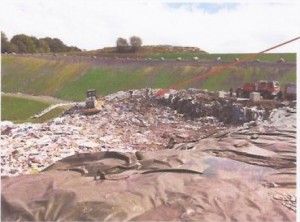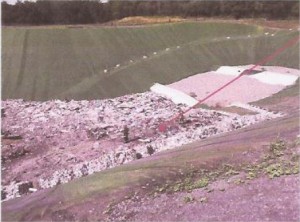Around 1:30 pm, employees at a non-hazardous waste burial facility detected smoke and flames inside an operating honeycomb cell. The receptionist notified first responders while site employees smothered the flames and removed the ignited wastes using a backhoe, before flattening them with the site’s compactor; the flames were extinguished at 1:45. Arriving at 4 pm, fire-fighters sprinkled the combusted part of the storage cell with 2 vehicles for 15 min and then left. The local mayor visited the scene. Monitoring was reinforced that night and for the following 72 hours (more frequent rounds by the contracted watchman). Normal activity resumed the next day. The cell’s sealant membrane remained intact; the burnt surface area covered 20 m² at ground level.
The site operator’s investigation revealed that 2 dumpsters of non-hazardous waste and bulky items for disposal had been buried in the cell that morning from the unloading platform and then compacted. A strong wind was blowing that day, and the hypothesis of self-ignition by spontaneous air intake into the waste undergoing compaction was forwarded, or else a reaction between the waste and original products. The operator consolidated the control procedure applied to incoming waste dumpsters.





